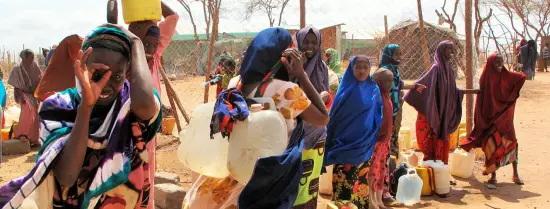Representations and perceptions of mediated distant suffering
Most of today’s humanitarian catastrophes are taking place in countries of the so-called Global South. At the same time, countries in that part of the world are often among those least likely to be visited by those living in the West. In this configuration, what most of Western audiences know about and how they relate to victims of large-scale humanitarian disaster is almost exclusively derived – directly or indirectly – from various media accounts. It is therefore not surprising that media and communication scholars have started to pay increasing attention to the way that Western media depict human suffering in non-Western countries.
These debates have revolved mostly around the question of how different depictions of humanitarian catastrophe carry the potential to make people care and to foster a sense of moral responsibility or, alternatively, lead to moral apathy and “Compassion Fatigue” in Western audiences. This increased interest in the media’s role of communicating the suffering of distant others, has been described as a ‘moral turn’ in media studies.
Given these developments, it is striking that most empirical studies that we encounter in this field have focused on analyzing instances of representation, rather than investigating audience reception of and responses to different types of media depictions of distant suffering.
These debates have revolved mostly around the question of how different depictions of humanitarian catastrophe carry the potential to make people care and to foster a sense of moral responsibility or, alternatively, lead to moral apathy and “Compassion Fatigue” in Western audiences. This increased interest in the media’s role of communicating the suffering of distant others, has been described as a ‘moral turn’ in media studies.
Given these developments, it is striking that most empirical studies that we encounter in this field have focused on analyzing instances of representation, rather than investigating audience reception of and responses to different types of media depictions of distant suffering.
This PhD project aims to address this lacuna by exploring audience receptions of and responses to mediated distant suffering caused by natural disaster or violent conflict. It hereby focuses on media representations of humanitarian crises in developing countries that enter the world of Western audiences through print or audiovisual/interactive media. The empirical focus of the project lies on perceptions of and responses to three types of representations: television news of humanitarian disaster (NOS Journaal in LISS study), online humanitarian campaign (Kony 2012) and interactive forms of humanitarian communication (UNHCR’s My Life as a Refugee App).
The project follows a multi-method, multi-disciplinary approach: The methods that are employed include surveys, experiments, and focus group interviews. The theoretical framework of the project builds on media studies and communication science, but importantly also draws on findings and concepts from the field of moral psychology.
The overarching research question that guides this project is:What are conditions that foster or foreclose different forms of engagement with mediated distant suffering?
Sub-questions that are addressed in the theoretical and empirical chapters include:
- How can the field of distant suffering be advanced conceptually and empirically by drawing on the discipline of moral psychology?
- What specific conditions of representation can limit the space of moral, emotional and behavioral engagement with mediated distant suffering?
- What specific conditions of representation can create spaces of moral, emotional and behavioral engagement with mediated distant suffering?
Research team
Johannes von Engelhardt, MSc
PhD Candidate
Prof. dr. Jeroen Jansz
Promotor
Publications
- von Engelhardt, J. (forthcoming). Studying western audiences vis-à-vis mediated distant suffering. A call to venture beyond media studies. International Communication Gazette, special issue on Distant Suffering (guest editing and introduction: Joye, S. & von Engelhardt, J.)
- von Engelhardt, J. & Jansz, J (2015). Distant suffering: the mediation of humanitarian disaster. In: Anderson, R. (editor). World Suffering and Quality of Life, Springer Social Science Indicators Research Series, 75-87.
- von Engelhardt, J. (2015). Leid und Mitleid: Mediendarstellungen humanitärer Katastrophen und deren Wirkung. Das In-Mind Magazin, 5. Available at http://de.in-mind.org/article/leid-und-mitleid-mediendarstellungen-humanitaerer-katastrophen-und-deren-wirkung
- von Engelhardt (2015). Wat werkt? Zielige Slachtoffers of sterke mensen. Published on website One World. Available at https://www.oneworld.nl/research/wereldwijde-vraagstukken/wat-werkt-zielige-slachtoffers-sterke-mensen
- von Engelhardt, J. & Jansz, J. (2014). Challenging humanitarian communication. An empirical exploration of Kony 2012. International Communication Gazette, 76(6), 464-484.
- Golčevski, N., von Engelhardt, J. & Boomgaarden, N. (2013). Facing the Past: Media Framing of War Crimes in Post-Conflict Serbia. Media, War & Conflict, 6, 117-133.
- Verdonschot, I. & von Engelhardt J. (2013). Representaties van leed tussen ‘adventure’ en ‘emergency’. Een ‘critical discourse analysis’ naar de representatie van de watersnoodramp in Pakistan (2010) op de Nederlandse televisie. Tijdschrift voor Communicatiewetenschap, 41(1), 62-81.
